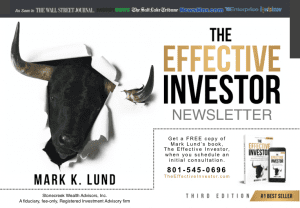
Sometimes free really does mean free, like that cheese sample at the grocery store, or the old shelf someone is giving away on Craigslist. You get the item for nothing and there really is no further obligation.
But most often, free means you’re still paying for the item. The cost is just hidden or deferred. We know that when we order something online and it comes with free shipping, the cost of UPS bringing it to our house is reflected in the price. Still, we feel better about the purchase when we can tell ourselves that some part of it was free.
This principle that there really is no free lunch is very much in effect in the financial world. Despite marketing language to the contrary, it costs money to operate in this sector, and to make a profit companies must pass their costs along to you one way or another.
The no-fee stock trading companies are no exception. Robinhood, the mobile trading app that grew rapidly during the pandemic, made speculating in stocks easy, fun, and apparently, free.1 But it soon came out that the company was making its money in hidden fees.
Christopher Schwarz, a finance professor at the University of California Irvine, was looking to compare the hidden costs to day traders assessed by the five major market makers (companies that actually execute the trades). He could not find available data on this—the costs being very well hidden—so he organized a group of colleagues to run a study where they made their own trades and could compare the actual costs.2
Writing about this study for Advisorhub, Kim Stewart reports, “Over more than five months, the academics used their own funds to execute 85,000 trades in 128 different stocks and made what they considered an important discovery: They were getting significantly different prices to buy and sell the same stocks, depending on which brokerage handled the trade.”
In one example, the professors opened two brokerage accounts and placed identical orders. The next day, one was down by $150. The other was up by $12.
Stewart writes, “Extrapolating from the results, they estimate it costs small-time US investors as much as $34 billion a year.” As you might expect the paper published on the study concludes that, despite their name, so-called “no-fee” brokerage accounts for day-trading often come with ample hidden fees.
The prudent investor knows that fees are one of the costs of investing and to expect to receive a valuable service without paying for it is naive. However, the smart investor also knows that it’s possible to keep fees and other costs low, especially by avoiding needless transactions.
Make sure your financial advisor is committed to fee transparency as he or she helps guide you along the path to long-term success.
If you ever have any questions about your investments or retirement plans, please feel free to give me a call at 801-545-0696.
Regards,
Mark Lund
Stonecreek Wealth Advisors, Inc., A Financial Advisor in Utah
11576 S State Street, Bldg. 1002
Draper, UT 84020
Sources:
1. http://go.pardot.com/e/91522/ersonal-finance-robinhood-fees/92vcsc/1830519451?h=OqLQ9qc1DL33wpsPKGVwvqXAeiGGIZogRtxnXCgNzpA
2. http://go.pardot.com/e/91522/-34-billion-a-year-study-says-/92vcsg/1830519451?h=OqLQ9qc1DL33wpsPKGVwvqXAeiGGIZogRtxnXCgNzpA
Disclosure: This information should not be construed as investment, tax or legal advice and may not be relied on for the purpose of avoiding any Federal tax penalty. All information is believed to be from reliable sources; however we make no representation as to its completeness or accuracy. All economic and performance data is historical and not indicative of future results. Market indices discussed are unmanaged. Investors cannot invest in unmanaged indices. The publisher is not engaged in rendering legal, accounting or other professional services. If assistance is needed, the reader is advised to engage the services of a competent professional. This material was prepared by Efficient Advisors, LLC (“EA’) for Mark Lund, Mark is a Financial Advisor in Utah. He is known as a Wealth Advisor, The 401k Advisor, Investor Coach, Financial Planner, Investment Advisor and author of The Effective Investor. Mark offers investment advisory services through Stonecreek Wealth Advisors, Inc. a fiduciary, independent, fee-only, Registered Investment Advisor firm providing investment management and retirement planning for individuals and 401k consulting for small businesses. Mark’s newsletter is called The Effective Investor Newsletter. Cities served in Utah are: Salt Lake City, Salt Lake County, Utah County, Park City, Murray City, West Jordan City, Sandy City, Draper City, South Jordan City, Provo City, Orem City, Lehi City, Highland City, Alpine City, American Fork City. The views expressed herein are exclusively those of Efficient Advisors, LLC (‘EA’), and are not meant as investment advice and are subject to change. All charts and graphs are presented for informational and analytical purposes only. No chart or graph is intended to be used as a guide to investing. EA portfolios may contain specific securities that have been mentioned herein. EA makes no claim as to the suitability of these securities. Past performance is not a guarantee of future performance. Information contained herein is derived from sources we believe to be reliable, however, we do not represent that this information is complete or accurate and it should not be relied upon as such. All opinions expressed herein are subject to change without notice. This information is prepared for general information only. It does not have regard to the specific investment objectives, financial situation and the particular needs of any specific person who may receive this report. You should seek financial advice regarding the appropriateness of investing in any security or investment strategy discussed or recommended in this report and should understand that statements regarding future prospects may not be realized. You should note that security values may fluctuate and that each security’s price or value may rise or fall. Accordingly, investors may receive back less than originally invested. Investing in any security involves certain systematic risks including, but not limited to, market risk, interest-rate risk, inflation risk, and event risk. These risks are in addition to any unsystematic risks associated with particular investment styles or strategies.







